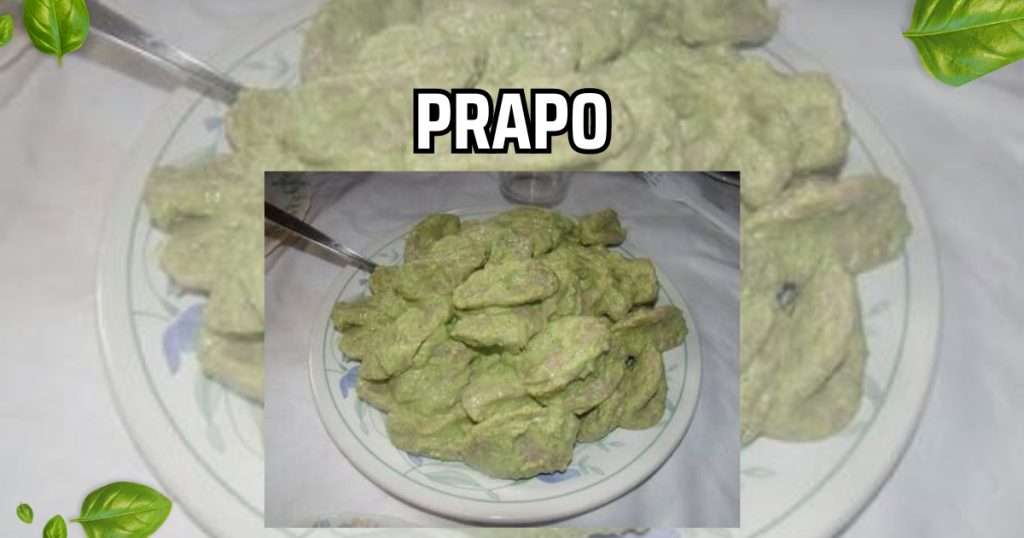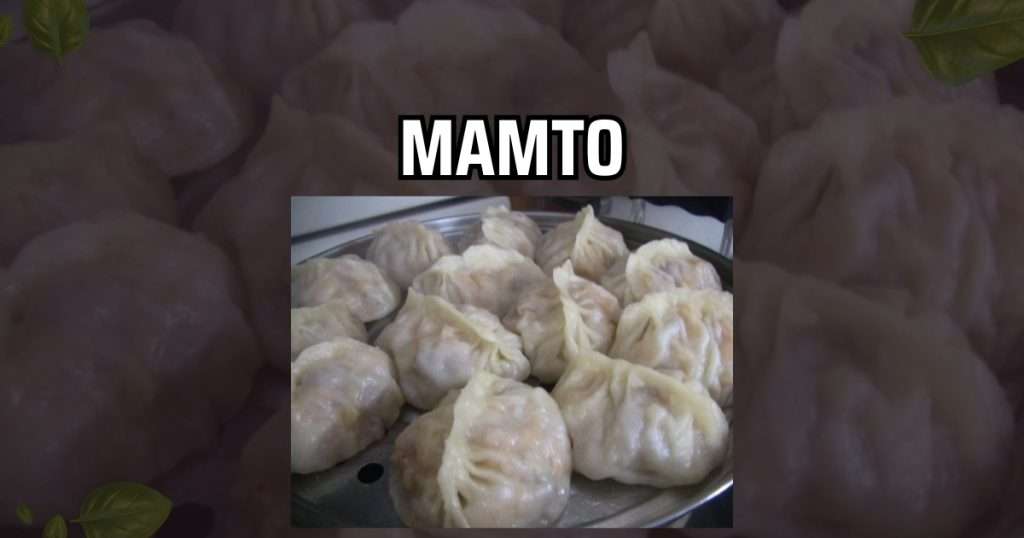Tucked in the majestic mountains of northern Pakistan, Gilgit-Baltistan isn’t just a haven for nature love., it’s a treasure trove of flavors. The region’s cuisine is deeply rooted in tradition, influenced by its harsh climate, cultural diversity, and reliance on locally grown ingredients. From steaming dumplings to rustic flatbreads and herbal teas, Gilgit-Baltistan offers a culinary experience like no other.
Whether you’re planning to visit or just curious about regional foods, here are 26 traditional dishes from Gilgit-Baltistan you must know about.
Furthermore, the second-highest mountain, K2, is in the GB mountain range. The Karakoram Extend, the Himalayas, and the Hindu Kush meet in Gilgit-Baltistan, making a staggering scene of snow-capped crests, icy masses, and profound valleys. The natural beauty of places like Hunza Valley, Skardu, and Naltar Valley, with turquoise lakes, rich green knolls, and old woodlands, snatch people’s attention.
In addition, the people of Gilgit-Baltistan are famous for their warm hospitality. Inviting grins and open hearts characterize the interactions with local people, making guests feel like they are part of the community. Conventional music, movement, and neighbourhood celebrations exhibit the energy of the region’s social life. Moreover, nature has gifted Gilgit-Baltistan with endemic wildlife, attracting tourists and zoologists. In addition, the Deosai National Park and others have played vital roles to protect its valuable capital. Moreover, the captive environment provides recreation to visitors and a place for study to students.
Read More: Best Places to Visit in Skardu and Gilgit Baltistan
Table of Contents
ToggleFamous Dishes of Gilgit-Baltistan
The famous dishes of Gilgit-Baltistan attract tourists and represent the identity of their region. The dishes available in Gilgit-Baltistan are primarily prepared with local vegetables and other unique ingredients. These things make them different and yummy from other food dishes. Also, the method of preparing these items makes them unique. Some dishes like Chapshoro, Go-lee, Marzan, Gyaling, Boiled goat, Prapu, Butter tea, Harissa, and others are famous from Gilgit-Baltistan. Let’s have a look!
Enlisted Famous dishes of Gilgit-Baltistan
Chapshoro/Chapshuro (Meat Pie)
Often described as the “Gilgiti pizza,” Chapshuro is a stuffed flatbread filled with minced meat (yak, beef, or mutton), onions, and spices, then baked on a griddle. It’s a staple for special occasions and long journeys.
Capshoro is a famous dish of Gilgit-Baltistan. Naan bread is filled with meat, prepared vegetables, and oil. At that point, the bread is fixed and heated in a broiler. The result is a beautiful, circular meat dish, like a pie. And then, the best portion is to ask what kind of meat you need in the dish. However, Capshoro can be made with chicken, hamburger, sheep, and yak (think of a genuinely feathery bovine).

Mamtu (Steamed Dumplings)
A delicious comfort food, Mamtu are dumplings filled with spiced minced meat and onions, then steamed. Served with chili sauce and yogurt, they reflect Central Asian culinary influence.
Mamtu is also known as the dumpling of the North. The local people make it by adding meat to an onion, chili, and garlic concoction. The dumplings are then steamed to flawless perfection. They smell and taste lovely and are a must-try on your next visit to that famous dish of Gilgit-Baltistan.
Go-lee (Gyaling [Fried Bread])
Often served at breakfast, Gyaling is a fried flatbread made with wheat flour. It’s crisp on the outside and soft inside, best enjoyed with tea or butter.
Go-lee is a delightfully created flatbread regularly served with meat dishes. It is made with eggs, salt, water, and cooking oil. Local people have it with their breakfast, so it’s ordinarily combined with a few meats or eggs. Many prescribe plunging the bread in Tea and getting a charge out of a decent, energy-rich breakfast, sometimes recently going out to work or play. Besides, Go-lee can entertain visitors and locals.

Balay (Noodle Soup)
A warm bowl of Balay is the perfect winter comfort. It combines hand-pulled wheat noodles with a rich broth and slow-cooked meat—often yak or beef.
In the cold environment of Gilgit-Baltistan, there are few things more warming and fulfilling than soup with its rugged exterior. And soup in Gilgit-Baltistan is not a watery undertaking, but maybe the Balay, as it’s known, is thick and healthy and tastes nearly like gravy along with the goat meat broth that shaped the flavor and base, generous gummy noodles and tiny bits of meat blended inside to make it yummy, as well as the famous dish of Gilgit-Baltistan.
Prapu
Prapu is a noodle dish thickened with almonds that have been ground to a powder. The noodles are hand-made using wheat flour and bubbled until delicate. When prepared, they are secured in a thick glue that incorporates ground walnuts and squeezed apricot oil, and the entire pot is ready with neighborhood herbs at that point. Its flavor varies depending on the herbs used for its preparation. Hence, its variety in flavor makes it a famous dish of Gilgit-Baltistan.

Gyaling
Numerous distinctive adaptations of Gyal (or Giyal) utilize a nearby species of Ruddy or Brown buckwheat as the fundamental ingredient. Gyal has a delightful smoky flavor from being cooked on a level press plate, more often than not over a wood-burning stove or fire. Some Gyal is secured with nectar, making it a tasty.
Diram Fitti
Most individuals living in Hunza work in these areas, requiring profoundly enthusiastic nourishment to fulfill their body requirements. Diram fitting is one of the ideal choices of nourishment for these individuals. Diram Fitti is a remarkable breakfast and a famous dish of Gilgit-Baltistan due to its high energy value. It is bread made from grown wheat flour, which gives it the usual sweetness. This dish is served with butter, almond, or apricot oil.
Payo/Pajo Cha
The word “PayoCha” combines two different words. Payo (Neighborhood Title) implies salt, and Cha (Urdu Word which tells Tea). It is one of the famous dishes of Gilgit-Baltistan. It is enlisted in broadly utilized drinks, particularly in Ghanche Khaplu Baltistan. If you ever encounter Kashmiri Chay/Tea, you can envision what the Payo Cha of Baltistan looks like in terms of color. The color of Payo Cha is brown, the same as Kashmiri Tea, but the taste and the preparation are entirely different. Payo Cha/Tea tastes salty since salt is the major fixing in this Tea.
Read More: Things to do in Nagar Valley
Buttering Daudo (Dried apricots)
Buttering Daudo is a conventional apricot soup that is made fundamentally in the winter season. It is an exceptionally supportive cure for getting free of the infections of the cold season and works well for individuals having obstruction issues. Dried apricots are used in this soup with other fixings, including sugar, water, and lemon. It is a famous dish of Gilgit-Baltistan due to its healthcare value. It is nearly arranged in each house of Hunza in the cold season because of its various benefits.
Fenugreek Soup (Sikarkuch’e Dagowang)
Fenugreek Soup, also known as Sikarkuch’e Dagowang in Hunza, is made with fenugreek in dried and powdered form. The stem portion of this plant is dried and fittingly ground until it becomes a powder. After that, it is cooked with wheat flour until it becomes thick. It is an exceptionally sound soup that lowers cholesterol and decreases skin irritation. Fenugreek Soup has been enlisted in famous dishes in Gilgit-Baltistan due to its health benefits for locals and visitors.
Fiti ( Burusho) / Brat ( Khowar) / Rood (Balti) / Chupati(Shina)
From Balti, Shina is Chupati, from Burusho is Fiti, and from Khowar is Brat the food of the Gilgit breakfast. Chupati , a type of wheat flour, was chosen as the primary one. This kind of bread is made at night and served in the morning with salty tea. Therefore, it’s virtually worn for breakfast.
Balay ( Balti) / Laqsha DawDoe ( Shina ):
Different kinds of soup called Balay are prepared throughout Baltistan . They are as follows: Traspi Balay, Frul-fru-li Balay, Nas Balay, Kro Balay, Tcha Balay, Faringi Balay, Strub Balay, Muli Balay, Kali Balay, Tsonmi Balay, and Shurba or Shaku . The most remarkable of them is Traspi Balay, which in Gilgit is called Laqsha Dawdoe.

Chapshoro
Another Hunza and Nagar district delicacy, “ChapShoro / Chap shoro,” is bread filled with chopped beef and onions and various spices. It is prepared using lamb or beef, chopped onions, green chilli, tomatoes, and green coriander leaves in the mixture. The dish is then baked in medium heat for 15 minutes to make it golden brown.
The best taste you will be getting from Chapshoro Food Street Rakaposhi Zero Point, KKH Nagar.
Marzan
Wheat grains are soaked for two weeks to prepare Marzan. Soaking in water some time recently being processed, the wheat grains take almost two weeks before being ground. This gives the flour a sweeter taste, an incredible nourishment to have in the center of winter when the climate is icy outside. It is known as a famous dish of Gilgit-Baltistan that will more often than not be eaten at extraordinary events, as the wheat is arranged in a particular and convenient way.
A bowl of unadulterated apricot oil is served on a little hill of Marzan, a gooey but marginally dry wheat mixture. The consistency of the wheat is exceptionally comparative to how it looks, nearly like dumplings or cookie dough. Marzan is straightforward, filling, and fulfilling, nearly like a cold-weather form of this astounding feast in Ethiopia. Finally, this dish gives vitality to individuals who customarily work outside year-round in the mountain situations of Gilgit-Baltistan.
Boiled Goat
Boiled goat is also a famous dish of Gilgit-Baltistan. In the Baltistan region, animals are primarily raised for drainage purposes. People of the Balti region care for their visitors and welcome them with that fabulous dish. The name of the dish is based on its recipe. Meat is boiled with some vegetables in a specific way so you can enjoy that famous dish on special occasions in Gilgit-Baltistan.
Butter Tea
Butter tea is equally important to other dishes and the central cooking regime of Gilgit-Baltistan. Again, your tour is complete if you taste it. It is not a simple tea; it contains various ingredients like salt, butter, and other local ingredients. Nonetheless, it is served with a side of new ground wheat flour and a little dish of unadulterated apricot oil, which you include for individual taste. Mix each brown flour and the brilliant apricot oil in a spoon, and appreciate a warming and thick blend of a few wealthiest fluids possible.
Harissa
Harissa is a fabulous combination of meat, rice, wheat, and green lentils. It can be compared with haleem, but it possesses extraordinary taste since it is uncommonly arranged with ghee. It is an excellent dish that the neighborhood individuals favor to eat. Harissa is exceptionally simple to make and a great source of protein. It can be eaten alone or can moreover be served with naan.
Shopan
Shopan is a delicious food in this locale. It is also known as the famous dish of Gilgit Baltistan. The critical ingredients for this dish include the stomach of sheep/goat or minced meat, flour, salt, red chili, coriander, onion, mint, water, salt, and oil. The meat is often marinated with vinegar or lemon juice to remove the scent. It is served with rice or wheat bread.
Gittey
Regarding famous dishes of Gilgit-Baltistan, Gittey must be addressed due to its good taste. It is comparable to the Franks and is prepared with the creatures’ digestive tracts, wheat flour, buckwheat flour, salt, pulverized red chili, coriander, mint powder, onion, water, and oil. The digestive tracts are washed legitimately to fill the blend. It ordinarily takes around 45 minutes to cook and is served with soup.
Momo / Mumto / Mamto
Momo is a conventional Tibetan dish and one of the famous dishes of the Gilgit Baltistan Nepalese dish that has become well known in numerous parts of the world, including Gilgit-Baltistan. The cultural dishes of Gilgit Baltistan are a hilly locale in northern Pakistan, so the food is intensely impacted by the area’s geology and the societies of the different ethnic bunches that possess it. A few prevalent dishes from the locale include: In Gilgit city, one can discover conventional dishes such as dumplings filled with meat or vegetables (known as “momo”) and a fiery stew made from lamb or hamburger called “Dham.” The dish comprises steamed dumplings filled with different types of meat, such as meat, chicken, pork, or vegetables.

Khar e Joli / Khar e Juli
Khar e Joli, the dish gilgit baltistan people loves to eat it Desi Butter and Beef (Buffalo Meat) A frequently served meal in Nagar Valley in the Gilgit region is Khar e Joli.
It is cooked only with Desi Butter and Beef (Buffalo Meat). Because the taste is too delectable, numerous persons want it at any event or wedding. However, due to its preceding construction, the public who devours it eagerly await its manufacture and refers to it with a union of friends.
Traditional Gilgit-Baltistan Food
Sidra
Sidra is a conventional stew from the Gilgit-Baltistan locale. It is celebrated as a famous dish of Gilgit Baltistan, particularly from Skardu. The dish is made with meat, potatoes, and turnips and is known for its generous and warming flavors.
Dugdugi
Dugdugi is a conventional pickle of famous dishes of Gilgit Baltistan from the Hunza Valley of Gilgit-Baltistan. It is made from various vegetables, such as radishes, turnips, or carrots, salted in a blend of salt, oil, and spices.
Cholak
In Ghizer, a steep valley known for its wealthy culture, one can discover conventional dishes such as “Cholak,” a meat-based stew. Cholak is a traditional meat-based stew from the Ghizer Valley of Gilgit-Baltistan. The dish is made with sheep or hamburger and is flavored with various flavors and herbs. It is also written as a famous dish of Gilgit-Baltistan.
Tumoro Tea
I suggest that whenever you visit GB, you try Tumoro tea. Tumoro Tea, an alleviating and strengthening drink, is an everyday favorite in each family in Gilgit Baltistan. The tea plant develops close to Nagar Valley, and local people skillfully create a scrumptious home-grown tea from its takes off, making it a delightful complement to any feast. Past its lovely taste, Tumoro Tea is famous for its therapeutic properties. It is utilized by local people to ease the common cold and migraines. Also, Tea is accepted to have calming impacts, which is advantageous for overseeing nerves and decreasing uneasiness. Hence, Tumoro tea is considered a famous dish in Gilgit-Baltistan.
Hoilo Garma
Hoilo Garma is one of the famous dishes of Gilgit-Baltistan. This delightful and nutritious dish is made from natural flour batter blended with locally developed spinach and aloo (potatoes). The exciting taste is also associated with an Alfredo pasta dish, advertising a delightful surprise. What sets Hoilo Garma apart is the expansion of chopped apricot seeds, loaning a corny flavor without utilizing any actual cheese. If you’re traveling to Pakistan from overseas and longing for a few Western eats, Hoilo Garma is a must-try dish that won’t disappoint you.

Diram Pitti
A naturally sweet bread made from sprouted wheat flour. It’s nutrient-rich and usually enjoyed during breakfast or with herbal teas.
Gilgit Baltistan Traditional Breads:
- Phitti
A soft, thick bread baked in a local hearth called “Khamir.” It’s commonly served with butter and salted tea. - Mul (Mil):
A dense and chewy local bread, baked in an iron skillet. It pairs well with soups and stews. - Marzan:
A celebratory bread made from wheat flour, served with apricot oil. It’s simple but deeply rooted in tradition.
Soups & Stews
- Hoilo Garma
A nourishing dish made by boiling local green vegetables with wheat flatbread pieces, garlic, and onions. It’s often eaten for dinner in the colder months. - Gooli (Barley Soup)
Made from barley, meat, and local herbs, this thick soup is filling and nutritious—especially favored in remote areas.
🥗 Appetizers & Snacks (Local Dishes in Hunza)
- Shapik (Stuffed Bread)
A thick flatbread with layers of dried apricot or walnuts, often served with tea or butter. - Prapu
Homemade wheat noodles topped with a rich sauce of crushed walnuts and apricot oil. It’s a delicate yet hearty local favorite.
🍬 Desserts & Sweets (Local Dishes in Skardu)
Ronda (Apricot Pudding)
A naturally sweet dish made with dried apricots, flour, and ghee. It’s served warm and is especially popular in Hunza.
- Hoi Lo Garma (Sweet Flatbread with Oil)
Pieces of flatbread cooked with sugar and apricot oil—a quick and delicious dessert. - Lassi (Sweet/Dried Yogurt Drink)
Made with curd and sugar, this refreshing drink is consumed chilled during the summer.
🍵 Herbal Teas & Beverages
- Tumoro Chai (Herbal Tea)
Brewed from the Tumoro herb found in the mountains, this caffeine-free tea is used for both taste and medicinal purposes. - Salt Tea (Namkeen Chai)
Prepared with green tea leaves, salt, milk, and butter—this pink tea is a daily beverage in most households. - Butter Tea (Po Cha)
Common in Baltistan, this warm and salty tea is high in calories, making it ideal for cold weather.
🎉 Dishes with Cultural Significance
- Gooli Bhat (Festive Porridge)
Prepared during traditional ceremonies using grains and sugar, topped with nuts or dried fruits.Pheti (Whisked Yogurt)
A thick, creamy yogurt served with meals and considered cooling in the summer heat. - Diltar Soup
A dish made from lentils, potatoes, and yak bones. It’s full of flavor and often cooked in large batches for communal meals. - Azoq (Boiled Wheat with Meat)
An energy-rich dish consisting of meat and boiled whole wheat, eaten for breakfast during winter. - Khamuloot
A nutritious preparation of boiled barley and ghee, typically served to children and the elderly.
🌿 Why Gilgit-Baltistani Cuisine Is Unique
- Locally sourced ingredients: Most dishes use regional produce like apricots, walnuts, barley, and yak meat.
- Preservation techniques: Due to extreme weather, drying and fermentation are common, especially for dairy and fruits.
- Simple, wholesome recipes: Meals are meant to be nutritious and sustaining.
26 Famous Dishes of Gilgit-Baltistan Conclusion
Gilgit-Baltistan confirms the mind-blowing excellence that nature has to offer. Its magnificent scenes, dynamic societies, and warm neighborliness make it a must-visit destination for anybody looking for an extraordinary enterprise in the heart of the Himalayas, Karakoram, and Hindukush. However, the locale is celebrated for its wealthy culture, common magnificence, clinic inhabitants, dynamic culture, and delightful food. GB offers various cuisines from different districts, encompassing well-known cities and towns like Skardu, Shigar, Gilgit, Hunza, Astore, and more. Here are our best picks of the famous dishes of the Gilgit-Baltistan region.
Gilgit Baltistan is a lovely territory that merits to be seen and investigated. So accumulate your companions, and for your following enterprise, take a trip to Gilgit Baltistan and attempt all their famous dishes! If you cherish traveling and nourishment, Gilgit-Baltistan must be on your bucket list. From staggering mountain crests to quiet sweets and rich greenery to calm waterways, Gilgit-Baltistan is paradise on soil, and there is no question about it.
FAQS
1. What are the famous dishes of Gilgit-Baltistan?
Gilgit-Baltistan is known for its differing culinary legacy. Some conventional dishes include Chapshuro, Soup, and Phkoras.
2. What is Chapshuro?
Chapshuro is a prevalent neighborhood dish that consists of minced meat (often sheep or hamburger) blended with flour and flavors. The meat is then collapsed into a pastry-like shape and prepared or fried.
3. How is Yakhni prepared?
Yakhni is a flavorful broth-based dish made with fragrant flavors from slow-cooking meat (commonly chicken or sheep). It is usually served with rice or bread.
4. What are Phakoras in Gilgit-Baltistani cuisine?
Phakoras are deep-fried dumplings made from gram flour (besan) and different nearby herbs. They are a delicious nibble all over the region.
5. Is there an extraordinary bread related to Gilgit-Baltistan?
Yes, a one-of-a-kind bread called “Ghustaba” is commonly arranged. It is a flatbread made with wheat flour and, more often than not, served with meat-based dishes.
6. What is an ordinary dessert in Gilgit-Baltistan?
A well-known dessert is “Shoshp,” a sweet dish made from apricots. The apricots are dried and then cooked with sugar for a delicious and fragrant treat.
7. Are there any particular tea assortments in Gilgit-Baltistan?
The locale is famous for its one-of-a-kind salted Tea, locally known as “Gundruk Chai.” It is a savory tea made with yak butter, a drain, and a squeeze of salt.
8. Which natural products are commonly utilized in Gilgit-Baltistani dishes?
Apricots, mulberries, and cherries are commonly utilized natural products in different dishes. They include a familiar sweetness and exciting flavor to savory and sweet preparations.
9. Can vegetarians discover appropriate alternatives in Gilgit-Baltistani cuisine?
Yes, vegetarian choices are accessible, such as “Palak” (spinach) and “Haak” (collard greens) dishes. Moreover, lentil-based dishes are popular.
10. Are there any regular specialties in Gilgit-Baltistan?
Yes, dishes like “Phamash” (buckwheat flapjacks) are enjoyed during winter. These dishes are regularly healthy and warm, reflecting the locale’s cold climate.







